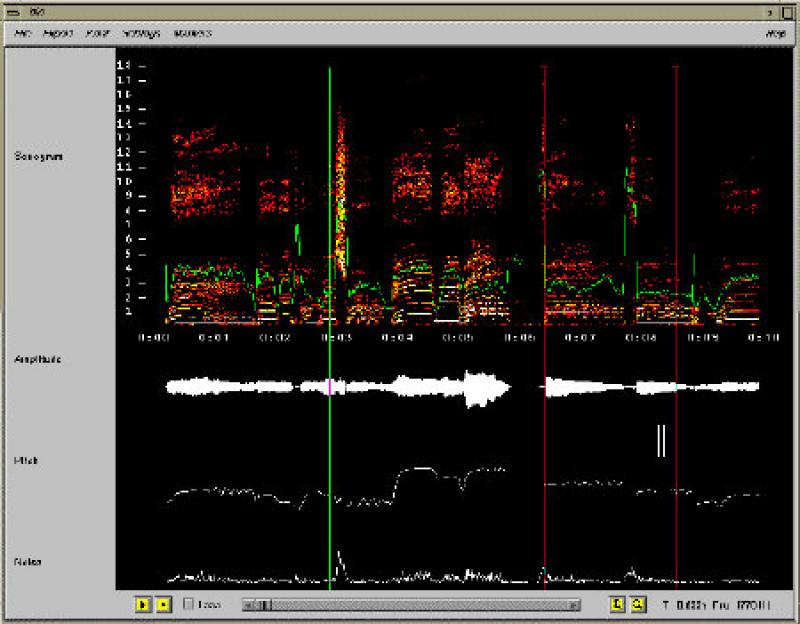Bio

Program for lydanalyse
Bio was an interactive analysis program for SGI machines, showing sonogram, spectrogram, oscillogram, pitch-track, spectral centroid and noise content.
Bio does a spectral analysis of a sound of any length. The user may zoom in and out of the sonogram and get exact values of amplitude and frequency, the latter using a phaze vocoder, by clicking on the image. The program also shows an oscillogram as in a sound editor, a pitch-track and a curve with a noise estimate.
Moreover, one can see a graph of the spectral centroid, and in a separate window a spectrogram for the time appears indicated by the mouse. Sound areas can be played from a speaker. All data can be exported to text files for further analysis eg. in Matlab or PostScript.
Bio was originally written as a bioacoustic tool in connection with a research project on howler monkeys in Costa Rica in which the program author participated. Eventually, it also proved useful in musicological analysis and for educational purposes.
The integrated presentation of different measurement data provides a detailed rich but understandable impression of various aspects of the sound, particularly in combination with playback.
As Ceres, based Bio on FFT (Fast Fourier Transform), that is done blockwise spectral analysis with a fixed number of analysis channels, evenly spread along the frequency axis. To estimate the exact frequencies of partials used phase information.
Pitch tracker uses the same algorithm as Pitch Tracker, and uses frequencies of partials, as fasevokoderen has estimated. Its keynote is searched for by using a simple heuristic
Noise content is estimated using the energy of a residual by linear predictive coding. Alternatively, one can choose a normalized measurement of spectral entropy.
Bio is designed and programmed by Øyvind Hammer, later maintained by Kjetil S. Matheussen.